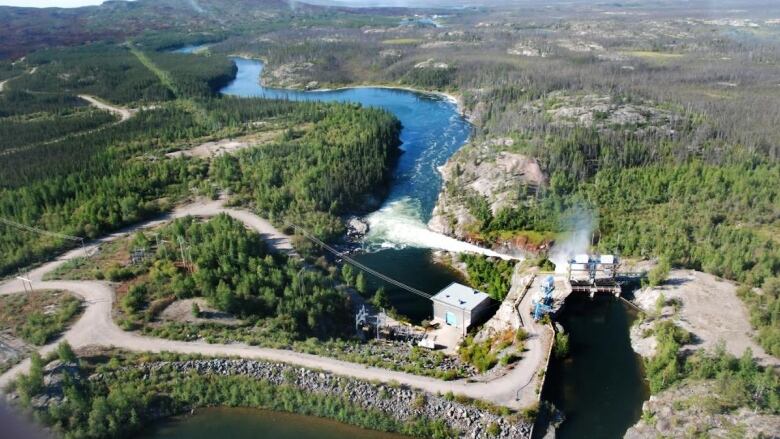Low water in N.W.T. means less hydro power, more use of diesel generators
Hydro generators for Yellowknife and surrounding areas producing significantly less power this year

A drop in water levels in the southern N.W.T. meanshydro generators areproducingless electricity for Yellowknifeand its surrounding area and diesel generators are helping to meet the need.
"Unfortunately, water levels continue to be well below average, which does require us to run diesel generators to make up the power necessary to meet the demand," said Doug Prendergast, the manager of communications for the Northwest Territories Power Corporation (NTPC).
Prendergast said diesel generators are more costly, and produce greenhouse gas emissions.
Hydro generators are typically used to provide nearly all the electricity to Yellowknife, Behchok and Dettah. In a year with more averagewater levels, hydrowould provide 95 to 98 per cent of power to the areas.
But this year hydro generators are producing only 55 per cent of the region's electrical power, with diesel generators producingthe rest.
Low waterat the hydroelectric facilities was evident in June, when the N.W.T. government spent $15 million in part to help keep the cost of electricity low for residents, as using diesel generators is more expensive.
The drop in water levels is attributedtothe intense heat last year as well as this year, according to Ryan Connon, a hydrologist with the Government of the Northwest Territories.
"Extreme hot conditions have led to a lot of evaporation. There's not a lot of water to move to the rivers, and there's also very little precipitation," he said.

Yellowknife gets most of its powerfrom the Snare Hydro system, which includes four hydro generating plants located on the Snare River.Yellowknife also receives some power from Bluefish Hydro.
Prendergast said that NTPChas a reserve connected to the Snare River,and they take water from the reserve when the flowfrom the Snare River is too low.
He said right now the amount of water flowing into the reserve is a third of what it would normally be in any given year.
He said that the corporation is continuing to track the snow melt and rainfall to help predict what the future could look like for the hydroelectric facilities.
Another N.W.T. hydro generation facility is also not currently operating and is relying on diesel generators.
The Taltson hydro dam is the primary power provider for the South Slave region providing power to Fort Smith, Fort Resolution, Hay River, Enterprise and the Kt'odeeche First Nation.
The facility is currently not providing power as it's beenunder scheduled refurbishment since April.
All of the areas that were served by the hydro facility are now relying on diesel generators for power.












_(720p).jpg)


 OFFICIAL HD MUSIC VIDEO.jpg)
.jpg)



























































































